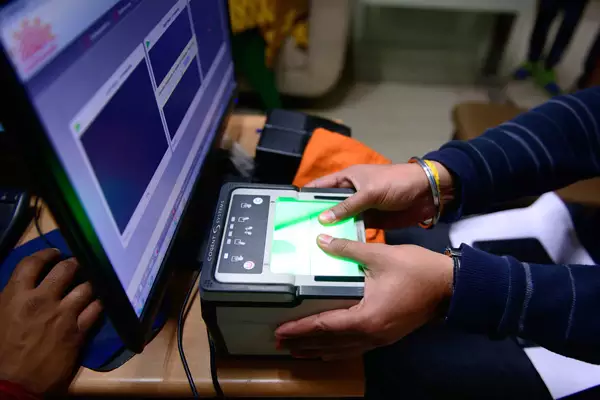Table of Content
- What is Aadhaar authentication?
- What are the benefits of Aadhaar authentication?
- What is Aadhaar Seeding?
- What is the GST Council?
- Why GST Council recommend biometric-based Aadhaar authentication for new registrations?
- Conclusion
What is Aadhaar authentication?
- It is a process of submission of Aadhaar number along with demographic information (such as name, gender, etc) or biometric information (fingerprint or iris).
- UIDAI (Unique Identification Authority of India) verifies the correctness of the details submitted, on the basis of information available with it.
What are the benefits of Aadhaar authentication?
- Instant mechanism: To prove the identity of an individual, reducing the need to carry any other ID proof except Aadhaar number. Example: Aadhaar Payments Bridge facilitates transfer of all welfare scheme payments to beneficiaries Aadhaar Enabled Bank Account.
- Curb leakages: Aadhaar authentication can help curb leakages and ensure that the targeted beneficiary is not denied entitlement.
- Attendance Tracking: Programs such as NREGA (National Rural Employment Guarantee Act), where financial outlay is linked to attendance, can use Aadhaar authentication.
- Financial transactions: Micro-ATM devices using Aadhaar authentication can aid in financial inclusion. Example: Aadhaar Enabled Payment System
- Accountability: It can be used for authenticating officials I members responsible for service delivery, audits, vigilance etc.
- Address verification: For providing services like telephone connection, banking products, can be done through Aadhaar- authentication.
What is Aadhaar Seeding?
- It is a process by which UIDs (unique identifier) of residents are included in the service delivery database of service providers for enabling Aadhaar based service delivery.
What is the GST Council?
- Itis a constitutional body thatoversees the implementation and regulation of the Goods and Services Tax (GST) in India.
- Itis established under Article 279A of the constitution.
- Itaims toensure uniformity and efficiency in the GST system across the country.
Functions:
- Itmakes recommendations on GST-related matters– tax rates, exemptions, thresholds, administrative processes, etc.
- Itdecides on goods and services subjected or exempted from GST and model GST laws.
Composition:
- Union Finance Minister (Chairperson) and Union Minister of State (Finance) from the Centre.
- Nominated minister from each state in-charge of finance or taxation.
- Every decision that is taken in GST Council meetings should be backed by a minimum of 75% majority of the weighted votes cast by the members of the council.
- The vote of the Central Government would have the weightage of 1/3rd of the total votes cast.
- The votes of the members of the State Government would have the weightage of 2/3rd of the total votes cast.
Why GST Council recommend biometric-based Aadhaar authentication for new registrations?
- It aims to combat fraudulent input tax credit (ITC) claims made through fake invoices.
- ITC Claims Fraud are means to reduce tax liability by claiming tax that were already paid on inputs.
Methods of Fraud conducted in ITC claims:
- Direct Method: Using invoices without receiving goods or services to claim ITC.
- Diversion Method: Issuing an invoice to one entity but diverting goods to another.
- Circular Method: Routing invoices through dummy companies to increase turnover without actual supply.
What are the motives behind such frauds?
- GST Evasion: Avoid paying taxes by using fake invoices.
- Money Laundering: Clean money through fake business transactions.
- Income Tax Benefits: Show reduced profits and higher expenses to pay less tax.
- Financial Benefits: Increase credit limit, get bank loans, improve company valuation, or divert funds.
Conclusion
Aadhaar authentication is a vital process that involves the submission of an individual’s Aadhaar number along with demographic or biometric information for verification by the Unique Identification Authority of India (UIDAI). This process offers multiple benefits, including a streamlined mechanism for identity verification, curbing leakages in welfare schemes, tracking attendance in programs like NREGA, facilitating financial transactions through micro-ATM devices, ensuring accountability in service delivery, and simplifying address verification for services like banking and telecom.
| UPSC IAS Preparation Resources | |
| Current Affairs Analysis | Topperspedia |
| GS Shots | Simply Explained |
| Daily Flash Cards | Daily Quiz |
Frequently Asked Questions:
What is Aadhaar authentication?
Aadhaar authentication is the process of submitting Aadhaar number along with demographic or biometric information for verification by UIDAI.
How does Aadhaar authentication work?
UIDAI verifies the correctness of the details submitted based on information available with it, ensuring the identity of the individual.
What are the benefits of Aadhaar authentication?
Aadhaar authentication provides an instant mechanism for identity verification, helps curb leakages, enables attendance tracking, and facilitates financial transactions efficiently.
How can Aadhaar authentication help with financial transactions?
Aadhaar authentication can be used for financial transactions through Micro-ATM devices, ensuring secure and efficient payment processes.
How does Aadhaar authentication aid in reducing leakages in welfare schemes?
Aadhaar authentication ensures that only the targeted beneficiary receives entitlements, helping to curb leakages and improve the efficiency of welfare schemes.


